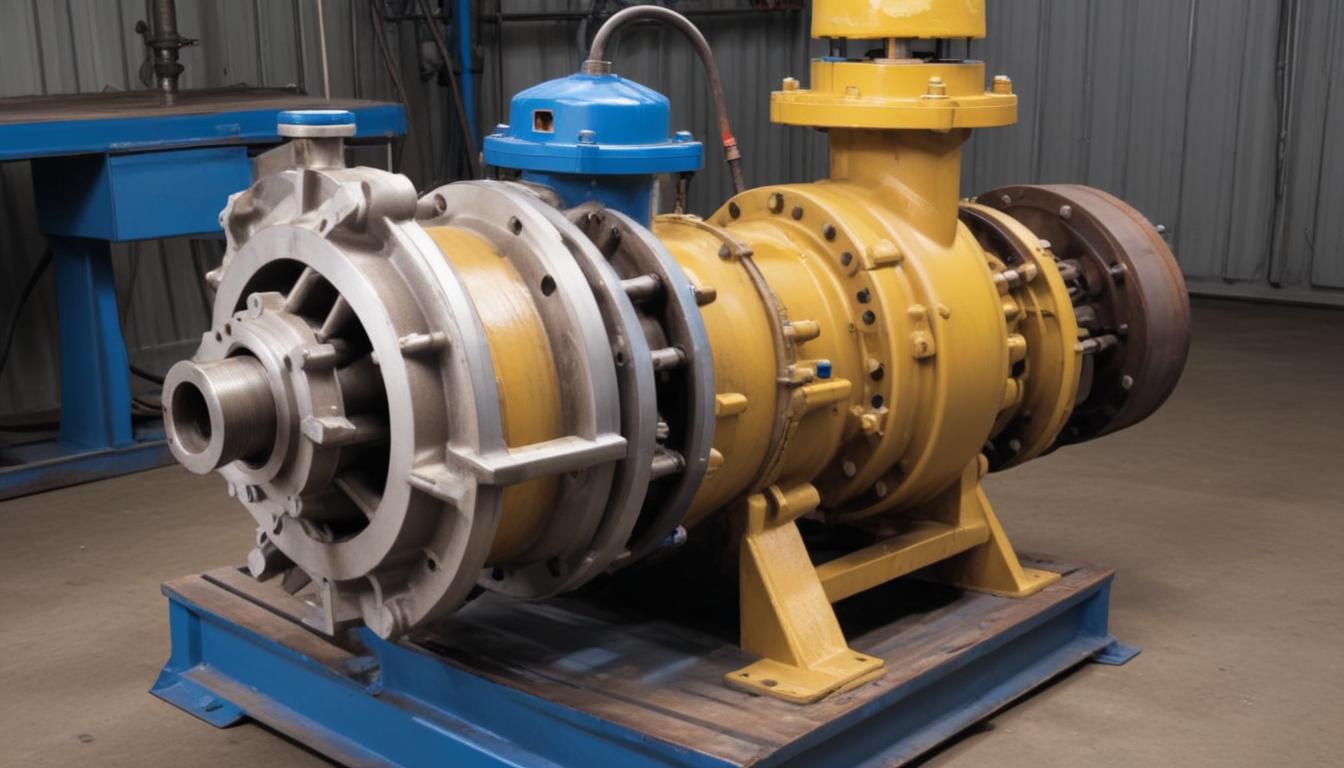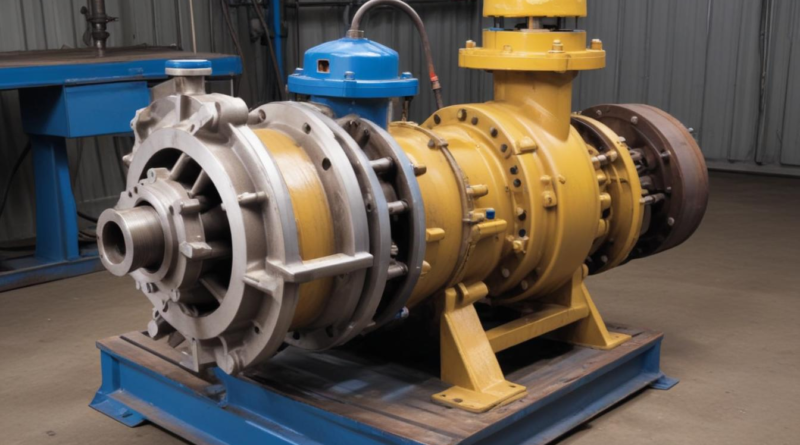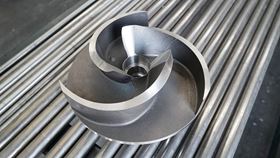how to diagnose pump cavitation
Pump cavitation is a prevalent issue in fluid handling systems, characterized by the formation and subsequent collapse of vapor-filled cavities within the pump. This phenomenon typically arises when the local pressure in the pump inlet drops below the liquid’s vapor pressure, leading to the generation of vapor bubbles. Upon movement to regions of higher pressure within the pump, these bubbles collapse violently, causing shockwaves that can result in significant mechanical damage.
Several factors contribute to the onset of pump cavitation:
- Inadequate Net Positive Suction Head (NPSH): Insufficient NPSH is a primary cause, where the available NPSH is lower than the required NPSH for the pump, leading to vapor formation.
- High Pump Speed: Elevated rotational speeds increase the likelihood of pressure drops that favor cavitation.
- Temperature Variations: Higher fluid temperatures reduce the vapor pressure, making the fluid more susceptible to cavitation under the same pressure conditions.
- Improper Pump Selection: Mismatched pump types and operating conditions can create environments conducive to cavitation.
- Flow Restrictions: Obstacles or bends in the piping system can cause turbulence and localized pressure drops, fostering cavitation.
Understanding the specific conditions that lead to pump cavitation is crucial for effective diagnosis and the implementation of appropriate solutions. The impact of cavitation extends beyond immediate mechanical damage; it can also result in reduced pump efficiency, increased maintenance costs, and unplanned downtime. Addressing pump cavitation involves a comprehensive analysis of both the pump and the system in which it operates.
A typical diagnosis process may involve evaluating the pump’s operating parameters, assessing the system’s hydraulic performance, and inspecting the pump for physical signs of cavitation damage, such as pitting or erosion on internal components. By systematically identifying the root causes of pump cavitation, engineers can devise targeted solutions to mitigate its effects and enhance the longevity and reliability of the pumping system.
common symptoms of cavitation
Recognizing the indicators of pump cavitation is essential for timely intervention and prevention of further damage. Common symptoms include:
| Symptom | Description | Implications |
|---|---|---|
| Unusual Noise | Presence of hissing, whining, or grinding sounds during pump operation. | These noises are often caused by the formation and collapse of vapor bubbles, signaling internal damage and the onset of cavitation. |
| Excessive Vibration | Increased and irregular vibrations detected through monitoring equipment. | Vibrations can result from uneven forces within the pump caused by cavitation, potentially leading to damage of bearings and seals. |
| Reduced Performance | Noticeable decline in flow rate or pressure compared to operational benchmarks. | Performance drops indicate inefficiencies caused by vapor cavity formation, which disrupts the smooth flow of the fluid. |
| Physical Damage | Visible signs such as pitting, erosion, or rough surfaces on impellers and other internal components. | Physical degradation of pump parts is a direct consequence of repetitive vapor bubble collapse, shortening the pump’s lifespan. |
| Increased Maintenance Costs | Frequent need for repairs or part replacements due to wear and tear. | Higher maintenance expenses reflect the economic impact of ongoing cavitation, highlighting the need for effective diagnosis and solutions. |
In addition to these primary symptoms, operators may observe fluctuations in pump efficiency and unexpected shutdowns. Monitoring these indicators through regular inspections and using diagnostic tools can facilitate early detection of pump cavitation. Timely recognition of these symptoms allows for the implementation of appropriate solutions, thereby minimizing downtime and extending the operational life of the pump system.
diagnostic tools and techniques
Accurate identification of pump cavitation requires the utilization of specialized diagnostic tools and techniques designed to detect subtle changes in pump performance and condition. Employing a combination of these methods enables engineers to comprehensively assess the pump’s operational status and pinpoint the presence of cavitation with precision.
- Vibration Analysis: Vibration meters and analyzers are essential for detecting abnormal vibrations that result from cavitation. By monitoring the frequency and amplitude of vibrations, technicians can identify patterns indicative of vapor bubble collapse and associated mechanical strain.
- Acoustic Emission Sensors: These sensors capture high-frequency noise generated by cavitation events. Analyzing the acoustic signatures allows for the differentiation between normal operational sounds and those caused by cavitation, facilitating early detection.
- Ultrasonic Detectors: Ultrasonic devices measure the ultrasonic noise produced by cavitation. This non-invasive technique can be integrated into existing monitoring systems to provide continuous assessment of pump health.
- Pressure and Flow Measurement Instruments: Accurate measurement of inlet and outlet pressures, as well as flow rates, is critical for diagnosing cavitation. Differential pressure gauges and flow meters help determine if the pump is operating within the required Net Positive Suction Head (NPSH) and identify any flow restrictions that may contribute to cavitation.
- Thermography Cameras: Infrared thermography is used to detect temperature anomalies on pump components. Areas affected by cavitation often exhibit unusual thermal patterns due to the inefficiency and heat generated by vapor bubble collapse.
- Data Logging Systems: Comprehensive data logging systems collect and store operational parameters over time. Analyzing historical data enables the identification of trends and intermittent cavitation events that may not be evident during short-term inspections.
Integrating these diagnostic tools into a systematic monitoring regimen enhances the accuracy of pump cavitation diagnosis. For instance, a combined approach using vibration analysis and acoustic emission sensors can provide a more reliable detection framework compared to relying on a single method. Additionally, implementing real-time monitoring systems allows for immediate response to emerging issues, reducing the risk of severe pump damage and unplanned downtime.
The following table outlines the key diagnostic tools, their primary functions, and the specific aspects of pump cavitation they address:
| Diagnostic Tool | Primary Function | Aspect Addressed |
|---|---|---|
| Vibration Analyzer | Measures vibration levels and identifies frequency patterns | Detects mechanical imbalances and cavitation-induced vibrations |
| Acoustic Emission Sensor | Captures high-frequency noise from cavitation | Identifies cavitation events through acoustic signatures |
| Ultrasonic Detector | Measures ultrasonic noise generated by cavitation | Offers non-invasive detection of vapor bubble formation |
| Pressure Gauge | Monitors inlet and outlet pressures | Ensures adequate NPSH and identifies pressure drops |
| Flow Meter | Measures the flow rate of the pumped fluid | Detects flow inconsistencies and restrictions contributing to cavitation |
| Thermography Camera | Detects temperature variations on pump components | Identifies thermal anomalies caused by inefficient operation |
| Data Logger | Records and stores operational data over time | Enables trend analysis and detection of intermittent cavitation |
Implementing a holistic diagnostic approach that leverages these tools not only enhances the accuracy of pump cavitation diagnosis but also supports the development of effective solutions. For example, data collected from pressure and flow measurements can inform adjustments to pump operating conditions, while insights from vibration and acoustic analysis can guide the selection of appropriate maintenance strategies. By systematically applying these diagnostic techniques, engineers can proactively address pump cavitation, thereby optimizing pump performance and extending equipment lifespan.
analyzing vibration and noise
 Vibration and noise analysis play a pivotal role in the diagnosis of pump cavitation, offering critical insights into the operational health of the pumping system. By meticulously examining the characteristic vibrations and acoustic emissions produced during pump operation, engineers can identify the presence and severity of cavitation, enabling timely interventions to prevent extensive damage.
Vibration and noise analysis play a pivotal role in the diagnosis of pump cavitation, offering critical insights into the operational health of the pumping system. By meticulously examining the characteristic vibrations and acoustic emissions produced during pump operation, engineers can identify the presence and severity of cavitation, enabling timely interventions to prevent extensive damage.
Understanding Vibration Patterns
Cavitation-induced vibrations typically exhibit distinct patterns that differentiate them from normal operational vibrations. These patterns arise due to the fluctuating forces generated by the formation and collapse of vapor bubbles within the pump. Key aspects to consider include:
- Frequency Analysis: Cavitation often produces vibrations at specific frequencies related to the pump’s rotational speed and the frequency of bubble collapse events. Identifying these frequencies can help isolate cavitation from other vibration sources.
- Amplitude Variations: Increased vibration amplitudes may indicate intensified cavitation activity. Monitoring amplitude trends over time can reveal escalating issues that require immediate attention.
- Waveform Distortions: The irregularity in vibration waveforms is a hallmark of cavitation. Smooth, periodic waveforms suggest normal operation, whereas irregularities point to the disruptive influence of vapor bubbles.
Noise Characteristics Associated with Cavitation
The acoustic signature of cavitation is distinctive and can be effectively utilized in diagnosing pump issues. Common noise characteristics include:
- Hissing Sounds: Continuous hissing may indicate the persistent formation of vapor bubbles at the pump inlet.
- Whining Noises: High-pitched whining sounds often result from the oscillation of vapor bubbles within specific regions of the pump.
- Grinding or Rattling: These noises are typically associated with the violent collapse of vapor bubbles, causing mechanical stress and potential damage to pump components.
Techniques for Vibration and Noise Analysis
Effective analysis of vibrations and noise involves a systematic approach using specialized tools and methodologies. The following techniques are essential for accurate diagnosis:
- Baseline Establishment: Establishing a baseline for normal vibration and noise levels is crucial. This involves recording data under optimal operating conditions to identify deviations indicative of cavitation.
- Spectral Analysis: Utilizing Fourier Transform techniques to convert time-domain vibration data into the frequency domain. This allows for the identification of specific frequency components associated with cavitation.
- Time-Domain Analysis: Examining vibration signals in the time domain can reveal transient events and irregularities caused by bubble collapse.
- Acoustic Monitoring: Deploying acoustic sensors to capture high-frequency noise generated by cavitation. Analyzing these acoustic signatures provides additional validation of vibration findings.
- Trend Monitoring: Continuously tracking vibration and noise levels over time helps in detecting gradual changes that may precede cavitation onset.
Interpreting Data for Accurate Diagnosis
Interpreting the collected vibration and noise data requires a thorough understanding of pump dynamics and cavitation mechanisms. Key steps include:
- Identifying Frequency Peaks: Correlate identified frequency peaks with the pump’s mechanical attributes, such as rotational speed and impeller blades, to pinpoint cavitation-related vibrations.
- Amplitude Correlation: Assess whether increases in vibration amplitude align with operational changes that could induce cavitation, such as flow rate reductions or pressure drops.
- Comparative Analysis: Compare current data against historical records to identify anomalies and trends that signify emerging cavitation issues.
- Cross-Referencing with Other Diagnostics: Integrate vibration and noise findings with data from pressure and flow measurements to corroborate the diagnosis and enhance accuracy.
Preventive Measures and Solutions
Upon confirming cavitation through vibration and noise analysis, implementing appropriate solutions is essential to mitigate its effects. Common strategies include:
- Adjusting Operating Conditions: Modifying pump speed, flow rates, or system pressures to maintain adequate NPSH and prevent vapor bubble formation.
- Pump Redesign or Replacement: Selecting pumps with improved cavitation resistance or redesigning impeller geometries to reduce susceptibility.
- System Modifications: Eliminating flow restrictions, relieving pressure drops, and ensuring proper piping alignment to minimize conditions conducive to cavitation.
The following table summarizes typical vibration and noise indicators of pump cavitation and their corresponding diagnostic interpretations:
| Indicator | Characteristic | Diagnostic Interpretation |
|---|---|---|
| Frequency Peaks | Presence of harmonics related to pump speed | Suggests repetitive bubble collapse events aligned with pump rotation |
| Increased Amplitude | Higher vibration levels compared to baseline | Indicates intensified cavitation activity and potential component stress |
| Waveform Irregularities | Distorted and non-periodic vibration signals | Points to erratic forces from vapor bubble formation and collapse |
| Hissing and Whining Noises | High-frequency acoustic emissions | Signals ongoing cavitation with active vapor bubble dynamics |
| Grinding Noises | Low-frequency rattling sounds | Indicates violent bubble collapse causing mechanical wear |
By diligently analyzing vibration and noise data, engineers can achieve an accurate diagnosis of pump cavitation, enabling the implementation of targeted solutions. This proactive approach not only prevents costly repairs and downtime but also ensures the sustained efficiency and reliability of fluid handling systems.
troubleshooting and prevention strategies
Effective troubleshooting and prevention of pump cavitation require a strategic approach that addresses both the immediate symptoms and the underlying causes. Implementing comprehensive solutions not only mitigates the adverse effects of cavitation but also enhances the overall reliability and efficiency of the pumping system. The following strategies outline key actions to diagnose and prevent pump cavitation:
- Optimize Net Positive Suction Head (NPSH): Ensuring that the available NPSH exceeds the required NPSH for the pump is fundamental in preventing cavitation. This can be achieved by:
- Increasing the inlet pressure by raising the liquid source level.
- Reducing the fluid temperature to lower its vapor pressure.
- Minimizing friction losses in the suction piping through proper sizing and smooth fittings.
- Adjust Pump Operating Conditions: Modifying the pump’s operational parameters can alleviate cavitation risks. Consider:
- Reducing pump speed to decrease the velocity-induced pressure drops.
- Implementing variable frequency drives (VFDs) to allow for dynamic speed adjustments based on system demand.
- Enhance Pump Selection and Design: Selecting a pump that is less susceptible to cavitation is crucial. Strategies include:
- Choosing pumps with higher NPSH ratings suitable for the application.
- Opting for impeller designs that promote smooth flow and reduce turbulence.
- Utilizing multi-stage pumps to distribute pressure changes more evenly.
- Implement System Modifications: Adjusting the overall system layout can significantly reduce cavitation risks. Actions may involve:
- Eliminating sharp bends and unnecessary fittings in the piping to reduce turbulence and pressure drops.
- Installing suction strainers or filters to prevent debris from obstructing flow.
- Ensuring proper alignment and support of pump assemblies to minimize mechanical stresses.
- Regular Maintenance and Monitoring: Proactive maintenance practices help in early detection and prevention of cavitation. Key practices include:
- Conducting routine inspections for signs of wear, such as pitting or erosion on pump components.
- Monitoring operational parameters using diagnostic tools to identify deviations from normal conditions.
- Scheduling periodic maintenance to address minor issues before they escalate into significant problems.
Implementing these troubleshooting and prevention strategies requires a thorough understanding of the pump system and its operating environment. A systematic approach ensures that both immediate and long-term solutions are effectively applied, safeguarding the equipment and maintaining optimal performance.
The following table provides an overview of common troubleshooting actions and their corresponding prevention strategies for pump cavitation:
| Issue | Troubleshooting Action | Prevention Strategy |
|---|---|---|
| Low Inlet Pressure | Check for leaks or blockages in the suction line. | Ensure adequate suction head by maintaining proper inlet pressure and minimizing suction line restrictions. |
| High Pump Speed | Reduce the rotational speed to lower the velocity and pressure drop. | Use variable speed drives to adjust pump speed based on real-time system requirements. |
| Flow Rate Fluctuations | Inspect for partial blockages or intermittent valve operations. | Install flow regulators and maintain consistent flow conditions to prevent sudden changes. |
| Temperature Increases | Verify cooling systems and monitor fluid temperature. | Control process temperatures to keep the fluid below its vapor pressure threshold. |
| Impeller Damage | Examine impeller for signs of pitting or erosion. | Select impeller materials and designs that resist cavitation-induced wear. |
| Excessive Vibration | Perform vibration analysis to identify cavitation sources. | Ensure proper alignment and secure mounting of pump components to minimize vibration transmission. |
Advanced Prevention Techniques
In addition to the primary strategies outlined above, several advanced techniques can further enhance the prevention of pump cavitation:
- Use of Cavitation Inhibitors: Chemical additives can be introduced to the fluid to raise its vapor pressure, thereby reducing the likelihood of vapor bubble formation.
- Installation of Anti-Cavitation Rings: These rings are placed around the impeller to stabilize flow patterns and prevent the inception of cavitation.
- Real-Time Monitoring Systems: Implementing integrated monitoring solutions that continuously track key parameters such as pressure, flow, and temperature can provide immediate alerts to potential cavitation events, allowing for swift corrective actions.
- System Redesign for Enhanced Flow Stability: Redesigning the piping layout to promote laminar flow and eliminate areas prone to turbulence can significantly reduce cavitation risks.
Training and Knowledge Development
Empowering staff with the knowledge and skills to recognize and address pump cavitation is a critical component of prevention. Regular training programs should cover:
- Understanding the mechanisms and causes of cavitation.
- Proper pump selection and system design principles.
- Effective use of diagnostic tools and interpretation of data.
- Maintenance best practices to ensure ongoing system integrity.
By fostering a culture of proactive maintenance and continuous improvement, organizations can effectively minimize the occurrence of pump cavitation, ensuring sustained operational efficiency and longevity of their pumping systems.
Implementing these troubleshooting and prevention strategies requires a collaborative effort between engineers, maintenance personnel, and system designers. By addressing both the technical and operational aspects of pump cavitation, organizations can achieve a robust defense against its detrimental effects, thereby ensuring the reliability and efficiency of their fluid handling systems.




